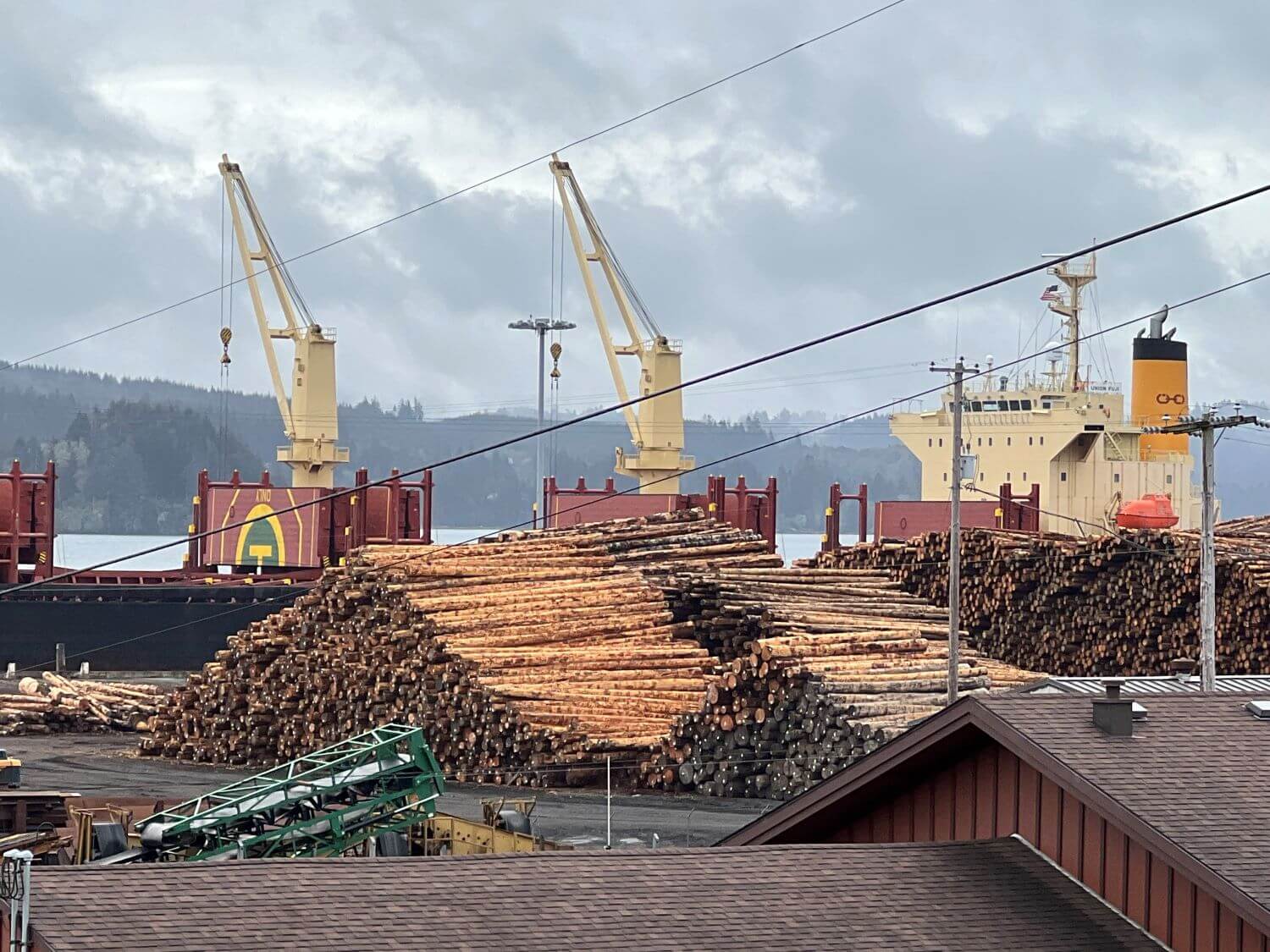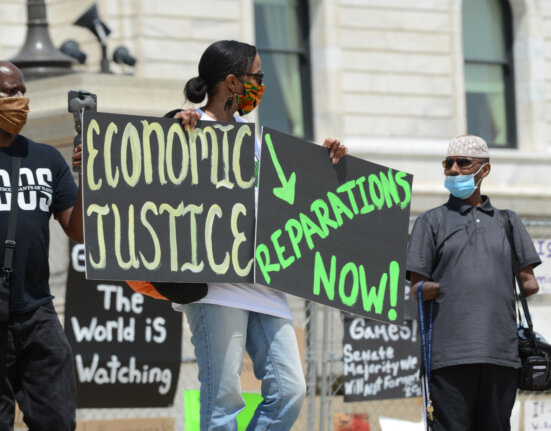Steven Beda’s essay, “‘Tie a Yellow Ribbon for the Working Man’: Environmental Conflict and Working-Class Politics in Oregon Timber Country, 1970–Present,” in issue 19:1 (March 2023) of Labor: Studies in Working Class History is available for free until July 30, 2023, courtesy of Duke University Press. In this essay Beda introduces the article with ruminations about working-class identity and images from a recent trip back to Oregon Timber Country. We will post author essays highlighting findings from this issue over the next few weeks.
I remember clearly the first time I learned of Timber Unity. I was traveling a rural highway in Oregon’s Coast Range sometime in the spring of 2019 and there it was: a large sign, printed in vibrant white and green, with bold lettering that read “#TimberUnity” and “Standing up for WORKING Oregon.”
Although Timber Unity would soon become a large—and according to many, a disruptive—presence in Oregon politics, this was the first I was hearing of it, and, in a way, it’s when my article in Labor began.
Travel through rural Oregon and you’ll see your fair share of informally placed signs promoting all sorts of political issues and causes, many of them decidedly right wing. Since 2016, pro-Trump signs are all over, as are signs denigrating gun control efforts. In southern Oregon, you’ll see a lot of signs supporting the State of Jefferson movement, a long-standing effort by some activists to cleave off several rural counties in California and Oregon and organize them into a new state, free from the political control of liberals in Sacramento and Salem.
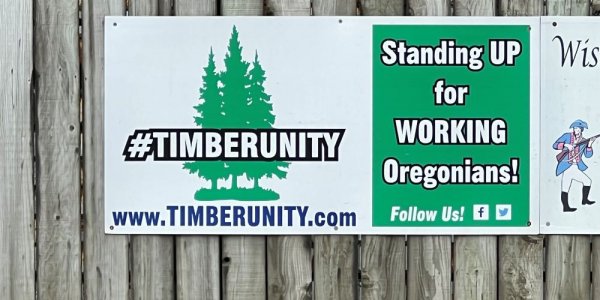
Signs like this started appearing all over rural Oregon in the spring of 2019, and encouraged the author to write this article. What does Timber Unity mean when it says “Standing up for WORKING Oregon?” It’s not an easy question to answer.
These signs are just part of the scenery of rural Oregon, and over the years I’ve sort of stopped paying attention to them. But the Timber Unity sign caught my eye because, at the time, I was working on a book about Northwest timber workers. Since published by the University of Illinois Press, that book, Strong Winds and Widow Makers: Workers, Nature, and Environmental Conflict in Pacific Northwest Timber Country, explores how the environmental concerns and considerations of people from the Northwest’s timber-working communities shaped their labor activism. Which is to say, if there was a new movement coalescing in the rural Northwest that claimed to represent “WORKING Oregon,” I ought to learn something about it.
Any questions I had about what Timber Unity was and who it represented were answered a few weeks later. In June of 2019, the group held its first (though, not its last) rally at the state capital in Salem to oppose a newly introduced bill aimed at reducing statewide carbon emissions. Timber Unity’s spokespeople claimed that the bill would unfairly burden the timber industry and imperil Oregon’s long-suffering timber industry.
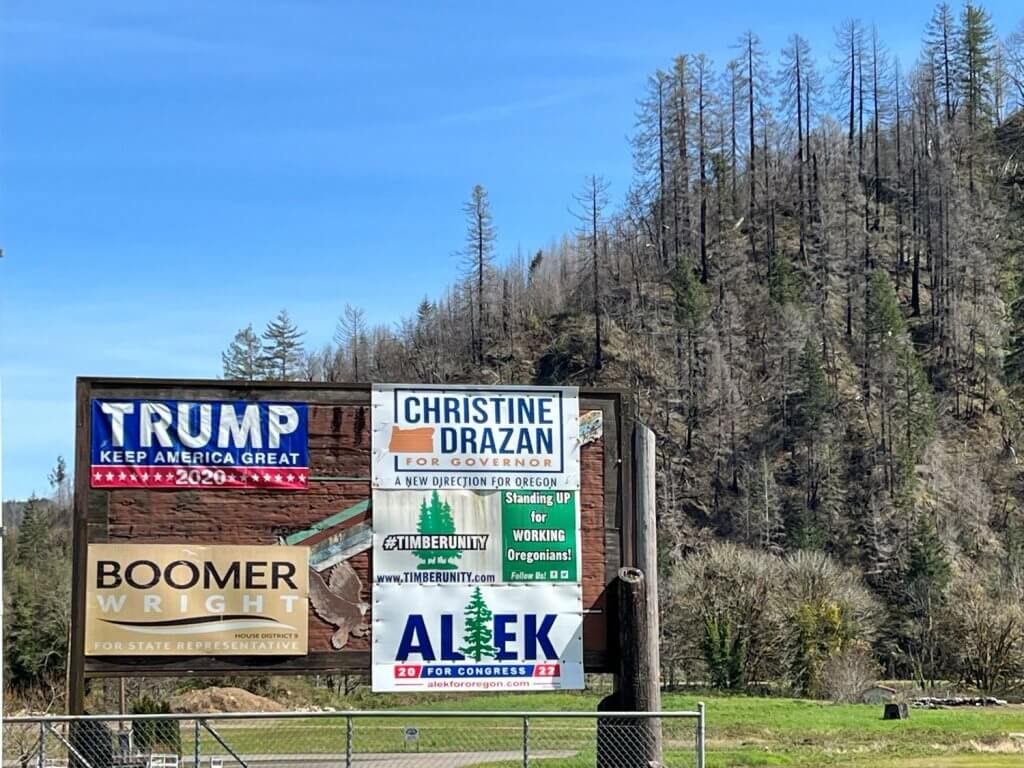
Or at least that was the ostensible purpose of the rally. Really, the event drew in the far-right from all over Oregon, including die-hard Trump supporters, several militia groups, and supporters of the State of Jefferson. The entire thing was loud and raucous, and in the end, it would have an utterly disruptive effect on Oregon politics.
In the months afterward, I interviewed some of Timber Unity’s members. Something immediately became clear to me: when the group’s members claimed to represent “WORKING Oregon,” they meant it. Nearly everyone I spoke with openly and proudly identified as working-class. And, they tended to see the new climate change bill as something of a class war being waged by affluent Portlanders on the hard-working rural communities in Oregon timber country.
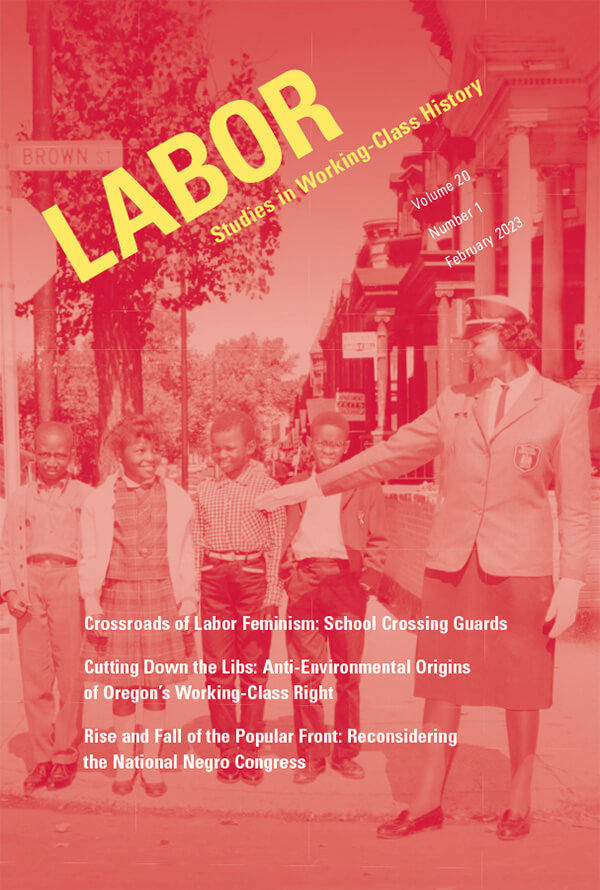
I worked a brief discussion of Timber Unity into the final chapter of my book. But a question nagged at me, one that I didn’t have the time or space to fully address at the time, which is why I ended up writing this article. And that question was this: what, exactly, do Timber Unity members mean when they identify as “working-class?”
The question nagged at me for a few reasons. The first was that while Timber Unity may have characterized itself as a working-class movement, its politics seemed more right-wing populist than working-class, more culture war than class war.
The second, and perhaps more vexing issue for me was that, to my mind, the class status of most of Timber Unity’s members wasn’t as straightforward as some of the group’s rhetoric suggested. True enough, life in the timber industry has always been economically precarious, and many of the group’s members came from struggling rural communities that still bore the financial and social scars of Northwest logging’s rapid decline in the late twentieth century.
Timber Unity was not a bunch of fatted capitalists living lives of upper-class luxury. And yet, most of Timber Unity’s members are probably better classified as employers rather than employees. Many are the owner-operators of logging trucks. Others, the owners of independent contract logging companies, basically small outfits of a dozen-or-so workers who harvest small tracts of timber on (as their name implies) a contract basis. The owners of these companies do often work in the woods right alongside the folks they employ, getting just as dirty as their crews, and encountering just as many dangers—but, they are still company owners.
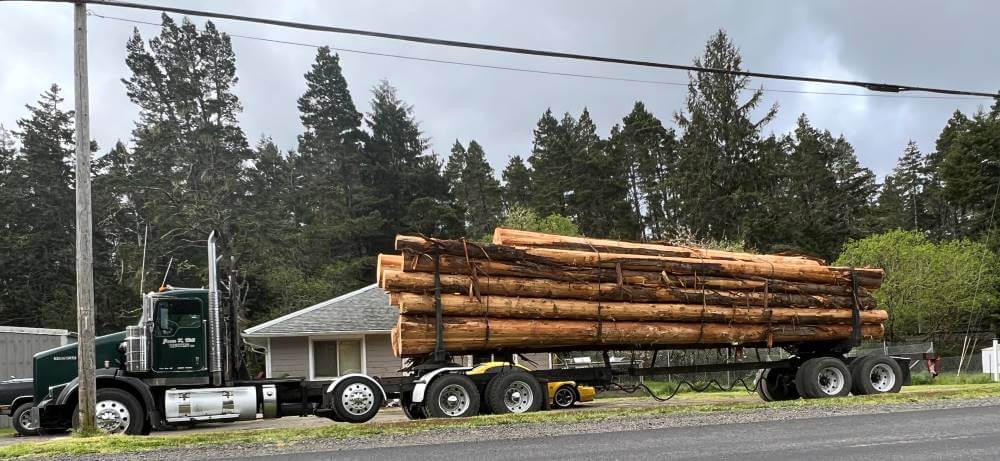
Adding to all this confusion was the fact that Timber Unity grew so large, so quickly, in the spring and summer of 2019 because the group happily and openly accepted several sizeable donations from some of the larger, far-better financed lumber interests in the Northwest. How could Timber Unity be, as is explained on the group’s website, a movement of “common working folks,” when it was financially dependent on large corporations?
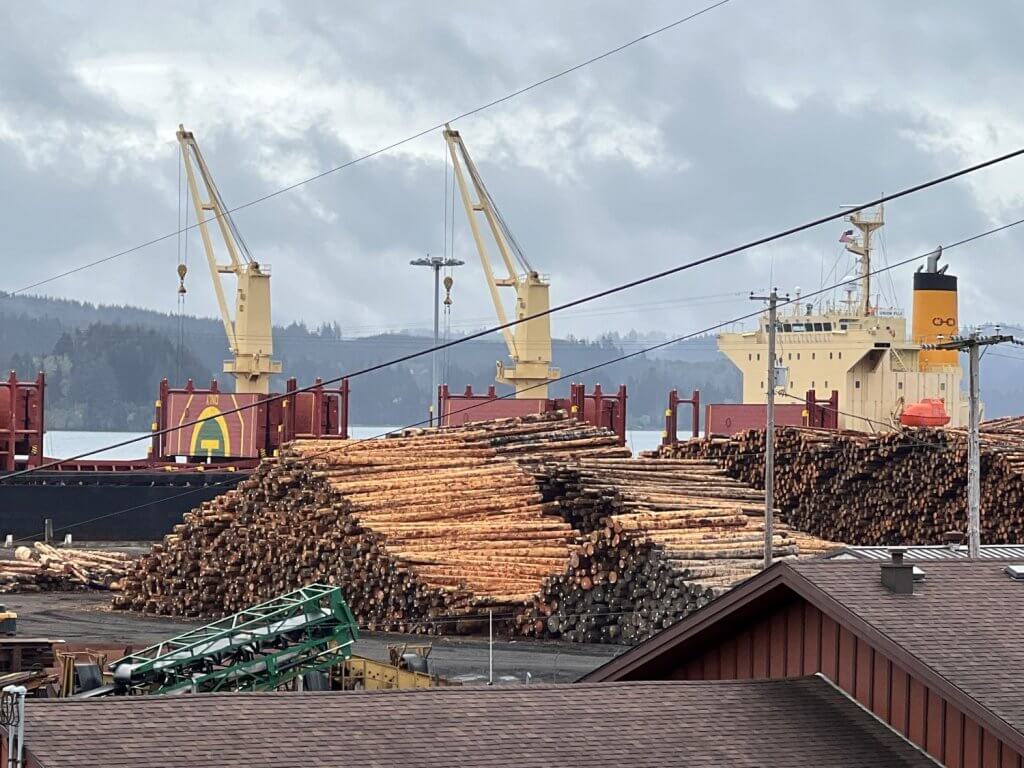
I should make something of a confession here. I believe I had difficulty accepting Timber Unity’s working-class rhetoric because, when it comes to many matters in labor history, I’m a romanticist. I desperately want to believe that there’s this thing that exists called the working-class, that it emerges when workers recognize that their interests are fundamentally opposed to those of the bosses, and that its purest political expression comes in the form of progressive, radical, and anti-capitalist industrial unions. Of course, as a labor historian, I know that this notion of the working-class has been more mythology than reality. Race, ethnicity, gender, birthplace and at least a dozen other things have divided workers more than class has united them. Even so, while the idea of a perfectly unified and properly anti-capitalist working-class is something of a fiction, I’ve long been drawn to the history the Northwest timber industry because workers here have perhaps come closer than many to realizing this idealized notion of class. This is a history filled with anarchists and socialists. The Industrial Workers of the World—the storied early-twentieth century union that sought to unite all workers into a single union and overthrow capitalism—figures heavily into much of the literature on Northwest loggers. My own book spends a good deal of time covering the International Woodworkers of America, a CIO-affiliated union largely organized by Communists at the height of the Depression.
I wanted to believe, or more properly I hoped to discover that a group like Timber Unity was simply using “working-class” as convenient rhetoric; that it did not truly represent the working-class in timber country. My thinking changed, significantly, after reading recent books by Dana Caldemeyer, J. Blake Perkins, and Jarod Roll, each of which shows, in various contexts, that working-class conservatism (particularly among white workers) dates back to at least the late nineteenth century. These books forced me to reckon with something that the romanticist in me preferred not to reckon with: to be “working-class” has meant different things to different people in different times and places. Sure, sometimes it’s been an identity rooted in the common grievances of workers against capitalism and it has propelled the creation of radical unions. But just as often, it’s been about accepting and even embracing the profit-seeking of capitalism and recognizing common interests with employers more than fellow workers. Small-business owners or contractors have long identified as “working-class,” and earnestly meant it.
All this forced me to reexamine timber country’s history. What I realized, and what my article argues, is that the sort of working-class identity and politics articulated by Timber Unity has a long history in the Northwest woods, and understanding the past, as well as the present of labor in the woods requires us to take seriously the myriad ways that workers have identified as “working-class.” To put that all a bit different: a romanticist like me might most enjoy studying the Wobblies and the CIO, but by only focusing on radical workers’ movements, I’ve been missing a big part of the story.
I hope all of this can serve as a lesson for other labor historians, not just the handful who study labor in the Northwest woods. I strongly suspect that I’m not the only romanticist out there. Many of us are likely interested in labor history because it holds the promise of a usable past, the opportunity to uncover histories of working-class identity and radical working-class politics that may serve to inspire future generations of workers and activists. That’s still a worthy goal, and it should never be abandoned. At the same time, to really understand how class has functioned in history and working-class politics, both past and present, we have to, from time-to-time, embrace the messiness and ambiguities of what it means to be working-class, even when—or perhaps especially when—we find workers who violate our romantic expectations.


